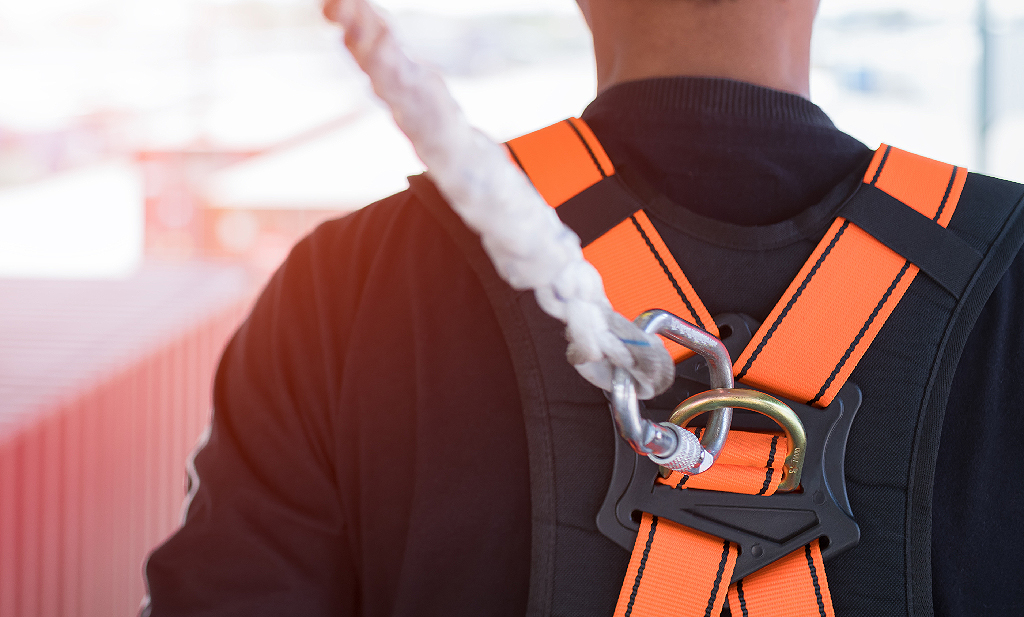Top 10 Frequently Cited OSHA Standards for Construction
By Evolution Safety Resources

Each year, the Occupational Safety and Health Administration releases the Top 10 Most Frequently Cited Standards from the previous fiscal year. By releasing the list, OSHA hopes to bring greater awareness to the standards most commonly cited for violations to help employers focus their employee-safety efforts in the workplace.
“Throughout the pandemic, workplace safety has become more important than ever,” says Julia Kunlo, CSP, vice president of Evolution Safety Resources. “Although incredible advancements are made in safety each year, the OSHA Top 10 list reminds us that we must continue to pinpoint areas where we can improve so we can better prioritize workplace safety in the future world of work.”
OSHA has separate sets of standards with different rules to address safety concerns for the construction, agriculture, and maritime industries, in addition to their general industry standards. OSHA’s website is a great resource, where you can search the Frequently Cited OSHA Standards by North American Industry Classification System Codes as well as by establishment size and by federal or state jurisdiction.
Fall protection (1926.501) remains at the top of the list for the 11th year in a row, followed by respiratory protection (1910.134) and ladders (1926.1053). Hazard communication, which spent the last several years at number two, moved to the fifth spot on this year’s list.
Below is the Top 10 Frequently Cited OSHA Standards for Construction for the 2021 fiscal year. Included are the title, standard number, and number of citations issued.
Top 10 Frequently Cited OSHA Standards for Construction
1. Fall Protection – General Requirements (1926.501)
- Title: Duty to have fall protection
- 5,295 citations
2. Respiratory Protection (1910.134)
- Title: Respiratory protection
- 2,527 citations
3. Ladders (1926.1053)
- Title: Ladders
- 2,026 citations
4. Scaffolds (1926.451)
- Title: General requirements
- 1,948 citations
5. Hazard Communication (1910.1200)
- Title: Hazard communication
- 1,947 citations
6. Lockout/Tagout (1910.147)
- Title: The control of hazardous energy
- 1,698 citations
7. Fall Protection (1926.503)
- Title: Training requirements
- 1,666 citations
8. Personal Protective and Lifesaving Equipment (1926.102)
- Title: Eye and face protection
- 1,452 citations
9. Powered Industrial Trucks (1910.178)
- Title: Powered industrial trucks
- 1,420 citations
10. Machine Guarding (1910.212)
- Title: General requirements for all machines
- 1,113 citations
Key Takeaways
The 2021 list is close to being identical to the 2020 list in terms of which citations made the Top 10. In fact, the list has been fairly consistent for years, with most of the same standards topping the list for citations year in and year out. Employers should take note of this list and try and incorporate these concerns in their safety training and toolbox talks. Violations for standards revolving around fall hazards continue to dominate the list, which is not surprising since falls are the leading cause of construction worker deaths every year. Six of the 10 standards making the list have to do with fall protection, ladders, and scaffolding.
While OSHA citations are costly in themselves, the potential costs of hazardous conditions on the job are far greater than just potential fines. Costs of unsafe workplaces may also include employee injury, property damage, increased insurance premiums, bad publicity, employee turnover, and more.

Avoidable, Yet Costly, Safety Violations
One of the reasons companies find themselves in violation of health and safety mandates is because rules change, but companies do not always keep themselves appraised of these changes. It follows that they do not make sure their employees’ know of health and safety legislation, rules, and regulations.
Failure to keep current and to ensure employees receive appropriate, regular, training and recertification can have disastrous results. Employees may be hurt or killed. Expensive equipment may be damaged or destroyed. Lost work hours due to preventable injuries may result in loss of production, increased insurance premiums, and bad publicity for the company.
It is also important that your team feels comfortable reporting close calls in the workplace in order to prevent a possible incident in the future. OSHA defines a near miss as an incident in which no property was damaged and no personal injury was sustained, but where, given a slight shift in time or position, damage or injury easily could have occurred. To learn more, read our blog post, “How Reporting Close Calls Can Prevent Future Incidents.”
If you need assistance understanding OSHA standards or you are interested in learning about the steps we take to ensure workplace safety and compliance, let’s get the conversation started today. Our experts at ESR are ready and available to help. We offer free consultations and will develop complimentary improvement plans.







